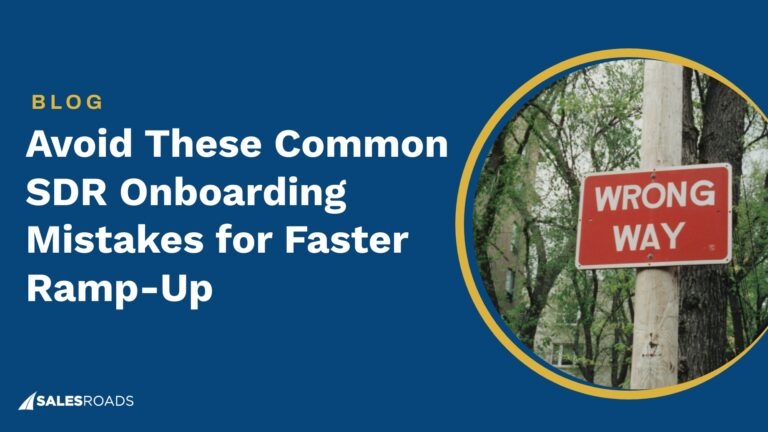Understanding the cold calling structure supports productive conversations with leads. Sales reps must grasp how this structure plays out before dialing to create cold calling scripts that enable SDRs to navigate dialogues with prospects smoothly.
Robust scripts contribute to successful cold calling campaigns by helping reps maintain focus, address key points, and personalize interactions. Ariav Cohen, VP of Sales and Marketing at Proprep, affirms their efficacy:
“Cold calling scripts come in handy by helping you deliver impactful statements and insights throughout the call. A good script not only keeps the client engaged but also helps the call deliver more value.”
Benefits of Having Cold Calling Scripts
Sales teams that use scripts to structure their cold calls enjoy the following benefits:
- A robust script is akin to a blueprint for communication that ensures all sales representatives articulate the company’s message in a unified manner. Consistent messaging helps reinforce the company’s values, unique selling propositions, and key product features.
- In sales, objections are inevitable. A comprehensive script anticipates these challenges and equips sales reps with well-thought-out responses. This preparation can transform potential setbacks into opportunities and help in smoothly navigating the conversation back to a positive trajectory.
- Utilizing a standardized script across the sales team provides a common baseline from which performance can be objectively measured. This uniformity makes it easier to identify which parts of the script are effective and which need improvement based on real-world interactions and outcomes.
- A well-prepared script acts as a safety net, providing sales reps with a clear framework and direction for the conversation. Knowing what to say and how to steer the conversation gives sales reps a sense of control and confidence, which is crucial in managing the psychological challenges of cold calling.
- Effective scripts are designed to be adaptable, allowing sales reps to personalize their approach based on the customer’s responses and needs. This customization is key to making each interaction feel personal and genuine and often plays a critical role in building rapport and trust.
While a script provides a fundamental structure for the conversation, it’s not a one-size-fits-all solution. Effective scripts are designed to be adaptable, allowing sales reps to personalize their approach rather than sound robotic and scripted.
Elements of a Cold Calling Scripts
To craft a strong cold calling scripts, sales managers need to be familiar with the typical cold call structure. This allows them to tailor each script to the products, services, and target market for high-yield results.
Opening statements
Cold call openers are crucial because they set the tone for the conversation. SDRs have about 30 seconds to introduce themselves and create an impression strong enough to capture the prospect’s attention.
An effective opening statement is concise and powerful. It should contain a courteous greeting, a brief introduction, a permission statement to proceed with the call, and a compelling value proposition.
Engagement/qualification questions
A powerful script — and, by extension, cold call — contains valuable qualifying and engagement questions. These shed light on your prospects’ needs and determine the suitability of your product for them.
Sales reps prefer open-ended and probing questions at that stage. Open-ended questions invite detailed responses and reveal your prospect’s situation while probing questions dig deeper to uncover underlying motives and insights.
To maximize the effectiveness of your questions, be sure to balance the type of questions you ask. Asking too many closed-ended questions can restrict prospects from providing useful insights. Conversely, an excess of open-ended questions can create ambiguity. and overloading a call with probing questions can disrupt the flow.
Objection management
Objections are ubiquitous in sales, especially cold calling, but you can help SDRs circumvent them.
Identify the most common objections encountered in past calls (like price, lack of interest, or satisfaction with current providers) and include them in the script with appropriate responses. Structure the script to highlight pain points that your product can solve, which can preemptively address these objections.
Storytelling
Julia Kelly, Managing Partner at Rigits, advises the use of stories to convey value when faced with unexpected cold calling objections:
“People will often be more engaged if you use stories in your sales pitch. For example, explain your product as the hero of an adventure story, emphasizing the value of its features in overcoming obstacles like competition or waste. If your customer finds themselves suddenly invested in the story and intrigued by how it ends, they might engage more readily with what you’re offering.”
Closing statement
The closing statement is the last stage of the call and is as vital to the success of your campaign as the other components. According to marketing expert Tony Angeleri, it determines the direction of the future conversation (and whether you’ve secured another call):
“A closing statement not only summarizes the call but also reiterates the need for collaboration. It tells the potential client how you intend to put the information you’ve collected to work so that the next time you communicate, you have something solid to offer. This not only sums up the interaction but also opens the doors for further communication.”
The closing statement comprises two parts: reiterating value and a call to action. After handling the prospect’s objection, seize the opportunity to drive home your product’s worth. Utilize the rapport established through the engagement questions to emphasize the most beneficial aspects of your offering.
You should reference the notes taken earlier in the conversation to tailor your pitch and demonstrate why you’re a good fit. Be careful not to transition to the closing statement too soon though, as it may come across as overly salesy and potentially deter the lead.
Always end a conversation with an actionable closing statement. Your closer’s call to action should align with the goals of the cold call campaign. Depending on your objectives, the statement could include scheduling an appointment for sales discovery, a product demo, or an in-person meeting.
If the prospect agrees to an appointment, refrain from pitching your product further, as it may jeopardize the deal. If they decline, conclude the call in a polite and respectful manner. They’ll remain potential customers, and your interaction will leave a positive first impression of your business.
Practices for Creating The Best Cold Calling Scripts
Cold call structure gives a sense of what scripts should cover and flow to help reps navigate the conversation. Here are the best practices to make your script polished:
Personalize your scripts with pre-call research
Tailor your script to each prospect’s specific needs, pain points, or interests. Personalization shows the prospect that you’ve taken the time to understand their unique situation, which can make them more receptive to your message.
Include references to the prospect’s recent business achievements, industry news, or any relevant updates you find during your research. You can use social media platforms like LinkedIn to gather insights about your prospect’s interests and professional background.
Keep it short
Long scripts can be overwhelming and hard for SDRs to follow. Keep your script concise with simple language and focused messaging to ensure a smooth conversation.
Identify the most critical aspects of your offering and build the script around these points. You can use bullet points to highlight key messages, making it easier to remember and convey the main points effectively.
Don’t read verbatim
Scripts should serve as a framework for the conversation, not a word-for-word pitch. Percy Gruwald, Co-founder of Compare Banks, supports this tenet, saying, “The script should be used as a guide to structure the conversation and not a strict template. Maintaining a natural and engaging discussion is more essential to getting results.”
Train your reps to use the script as a reference point rather than a strict script to be read. Role-play exercises can be an effective training tool to practice using the script in a more conversational manner.
Focus on benefits, not features
Unique features grab their attention, but the benefits are what will seal the deal. Instead of just listing features, explain how these features can solve specific problems or improve the prospect’s situation.
You can create a ‘benefit bank’ in your script, a collection of benefits tailored to different types of prospects or industries.
Evaluate and refine your scripts
Regularly review and adjust your scripts according to the feedback obtained from your conversations. Continuously updated scripts remain relevant and effective in addressing evolving market trends and prospect needs.
Regularly schedule script review sessions where reps can share their experiences and suggest improvements.
Bottom Line
By crafting cold calling scripts based on the typical cold call structure, sales teams increase their chances of turning cold prospects into warm leads and closing more deals.
For best results, sales reps should personalize scripts based on the specific needs of each caller and periodically review their outlines to refine their pitch. Incorporate the tactics outlined in this article to cut down on hang-ups and secure more interested leads.











